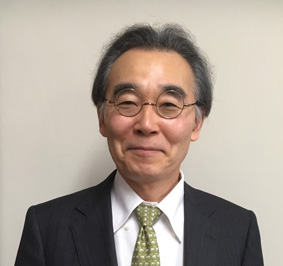- Kazuki Nabeshima
- President, the 50th Annual Meeting of the JSMBM

It is my pleasure to announce that the Japanese Society for Matrix Biology and Medicine (JSMBM) will hold its 50th Annual Meeting at the Medical Hall of Fukuoka University Hospital, Fukuoka, from Friday to Saturday, 29–30 June 2018. It is our honor to arrange this memorable meeting that will be held half a century after the founding of the JSMBM, then the Japanese Society for Connective Tissue Research. This milestone meeting has received our best efforts in preparation. The JSMBM has unique characteristics, in that many basic researchers and clinicians from a wide range of fields/disciplines get together and freely discuss matrix structures and biology. The fields are quite broad, and range from embryology to regenerative medicine and oncology. Our aim is for this meeting to benefit from and promote these positive characteristics.
Because we are pathologists, the programs have special reference to seeing with our eyes, as well as interactions and cooperation/bridging between basic and clinical researchers. We have invited two experts in the field of two-photon excitation microscopy, who will show us cell–cell or cell–extracellular matrix interactions in vivo: Prof. Peter Friedl, Radbound University Nijmegen Medical Centre/MD Anderson Cancer Center; and Prof. Junichi Nabekura, National Institute for Physiological Sciences. Prof. Friedl will focus on invading cancer cells and Prof. Nabekura on interactions between neurons and glial cells in the brain. We also invited Prof. Bryan P. Toole, who has led research on hyaluronic acid and emmprin based on cell–cell interactions for a long time, as a Meister lecturer – he will talk about his research and deliver a message to young researchers. We will also have three symposiums: “Integration of Basic and Clinical Researches,” “Cancer Microenvironments and Cellular Interactions” and “KSMB and JSMBM Joint Symposium.” We expect a great number of students and young doctors and researchers will apply for a Young Investigator Award (YIA), present their data, and have fruitful discussions.
We aim to make this meeting a good occasion for basic and clinical researchers to easily communicate and for young people to discuss freely. We look forward to welcoming many participants among members and non-members of the JSMBM.


